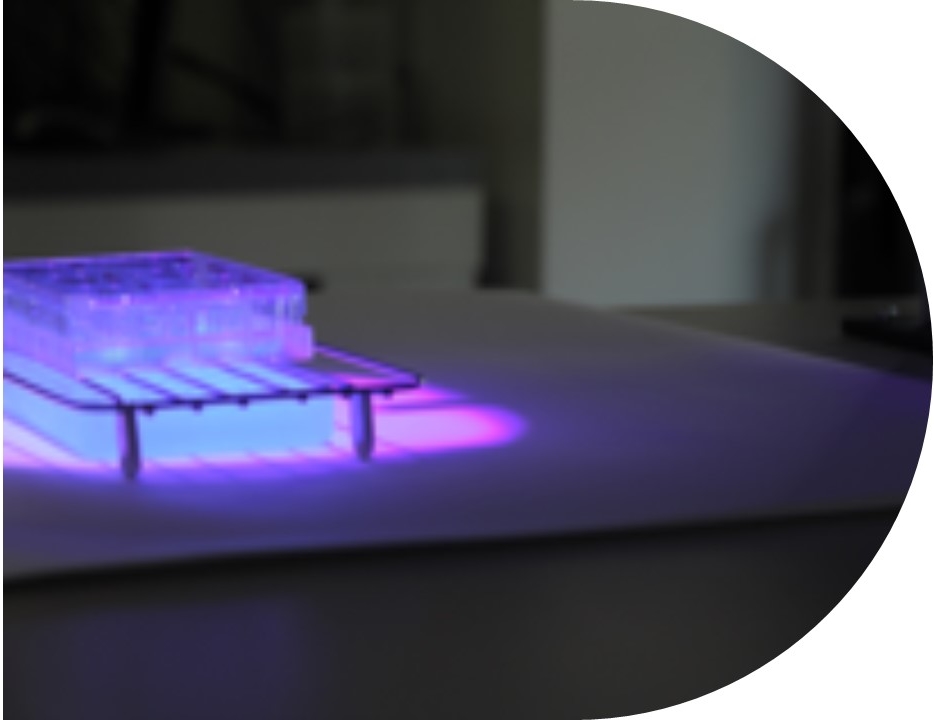LIST OF GLP CERTIFIED TESTS

Since 2014, VitroScreen is a Member of EU-NETVAL (European Union Network of Laboratories for the Validation of Alternative Methods) and is proud to have contributed to the definition of Good In Vitro Method Practices (GIVIMP) and new test methods validation.
Consistently with the new safety requirements introduced in many Regulations and the principles of IATA (Integrated Approaches for Testing and Assessment), an expert and deeper knowledge of the applicability domain of in vitro testing approaches is today highly recommended.

To address this issue, VitroScreen has established an In Vitro Consultancy Unit with the mission of providing high level in vitro Testing Strategies for Hazard and Risk Assessment, coupled with an independent pharmaco-toxicological expert judgment.
| OECD AREA | END-POINT | TEST METHOD | TEST GUIDELINE |
|
2 |
Phototoxicity | In vitro 3T3 NRU phototoxicity test | OECD TG 432 |
| Skin corrosion | In vitro skin corrosion | OECD TG 431 | |
| Skin irritation | In vitro skin irritation | OECD TG 439 | |
| Eye irritation | Eye Irritation Test | OECD TG 492 | |
| Skin sensitization | DPRA by LC–MS/MS | OECD TG 442C | |
| KeratinoSensTM | OECD TG 442D | ||
| EpiCS® in vitro skin sensitization test | SkinInVitro Protocol, January 2020 | ||
| h-CLAT and modified h-CLAT | OECD TG 442E (standard and modified protocol) | ||
| Genotoxicity | In Vitro Mammalian Cell Micronucleus Test | OECD TG 487 | |
| 3D Reconstructed Human Skin Micronucleus assay (RSMN) for products applied topically | Skin suppliers’ protocols | ||
| 9.3 Biocompatibility studies |
Irritation and cytotoxicity | MEDICAL DEVICE: Class IIa, IIb and III on 3D reconstructed human tissues as epidermis, epithelia as oral, gingival, vaginal, corneal, bladder, rectal, oesophageal, intestine, and upper airway |
ISO 10993-1(2018) ISO 10993-23 (2021) |
| 9.7 Pharmacokinetics/Toxicokinetics and ADME studies |
Percutaneous and epithelial penetration, distribution and passage | In vitro method for skin absorption on Human Skin Explants, 3D human skin models and 3D reconstructed epithelia as oral, gingival, vaginal, corneal, bladder, rectal, oesophageal, intestine, and upper airway. |
OECD TG 428 Customized protocols according to OECD TG 428 requirements |
The regulatory framework
The regulatory framework in Europe on the protection of animals used for scientific purposes (EU Directive 2010/63) has impact on all the Regulations and guidance documents dealing with the placing on the market of products which have to be safe for humans, animals and the environment.
The Directive states that it is necessary to increase the use of Alternatives and to eliminate unnecessary duplication of regulatory testing. While the cosmetic sector has completely banned animal testing (Regulation 1223/2009), all the other sectors, including chemical (REACH and CLP Regulations), pesticide (Regulation 1107/2009) and biocides (Regulation 528/2012), are slowly moving towards non-animal based safety assessment where the use of animal is only foreseen to address inconclusive situations.
Pharmaceutical Industries and Associations are supporting the acceptance of alternative approaches for regulatory pre-clinical safety assessment purposes and EMA has issued guidelines taking into account 3Rs principles and including non-animal approaches.
According to the Medical Device Regulation 2017/745, also the medical device sector is starting moving towards alternative approaches to animal testing, including a deeper knowledge of physico-chemical characteristics and in vitro methods to address irritation and sensitization potential for an evidence-based toxicological risk assessment.